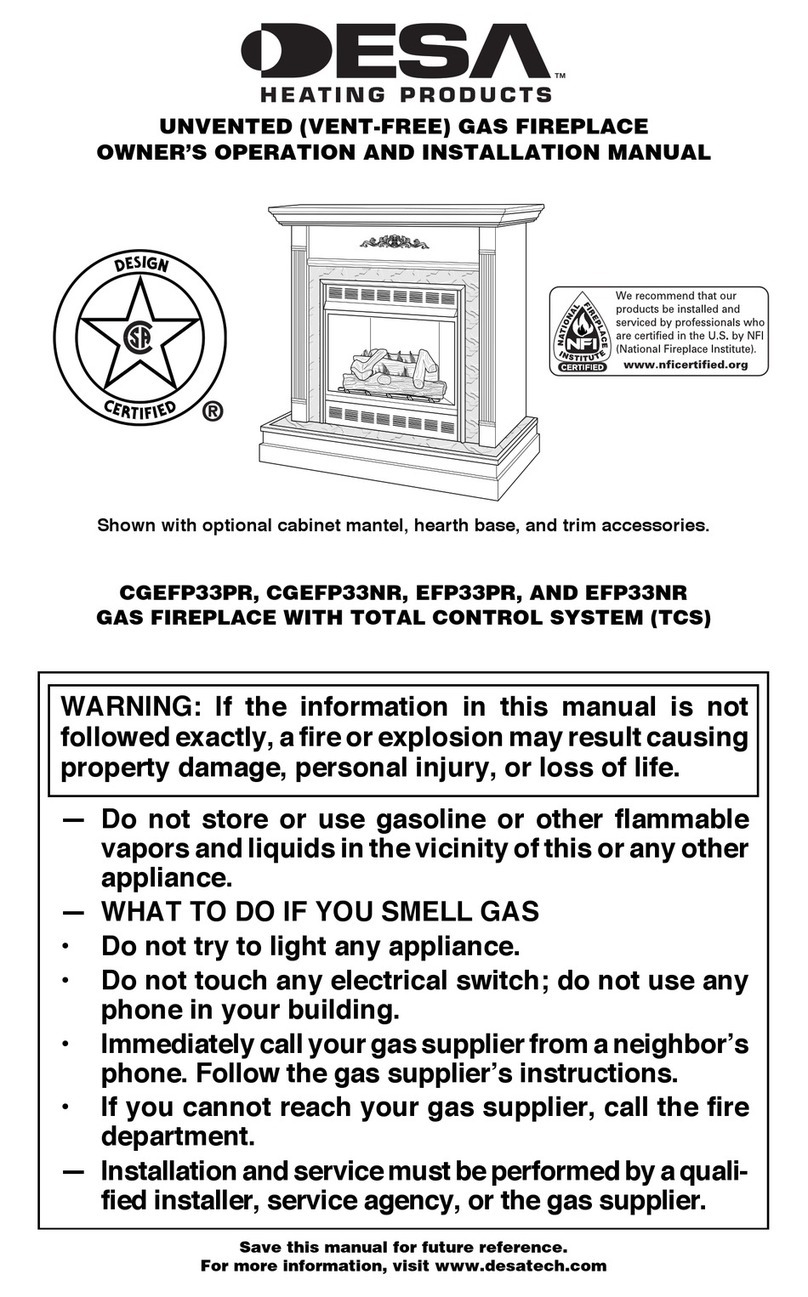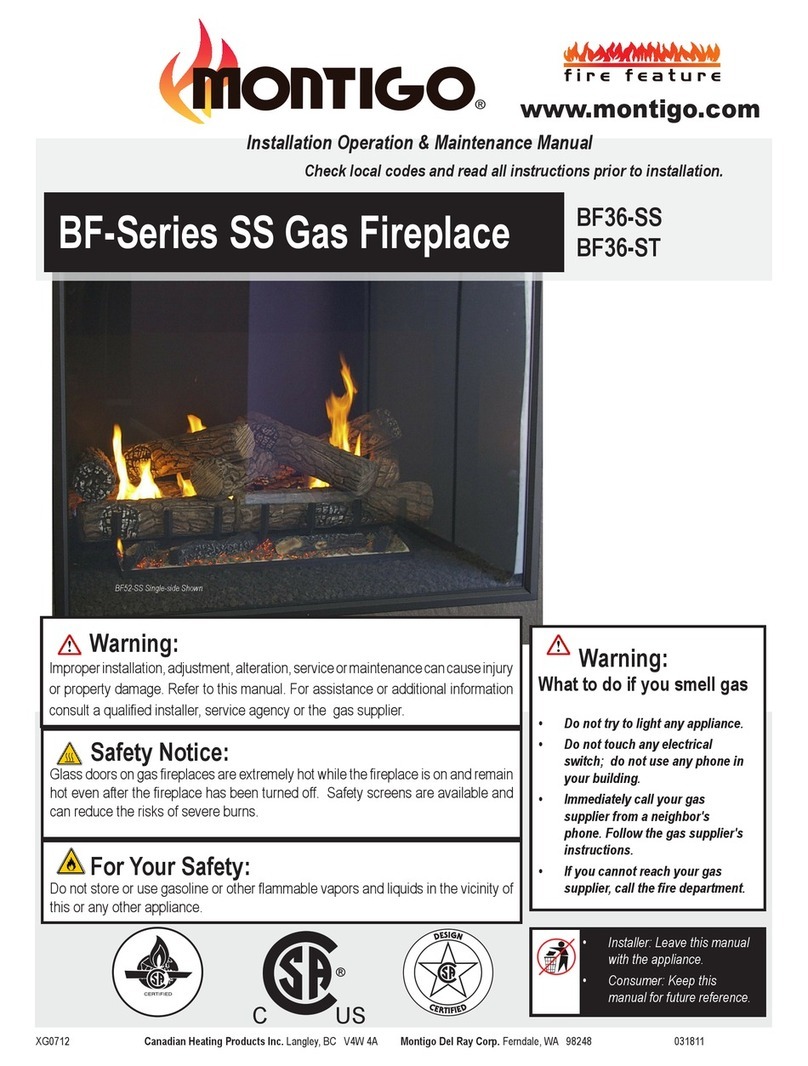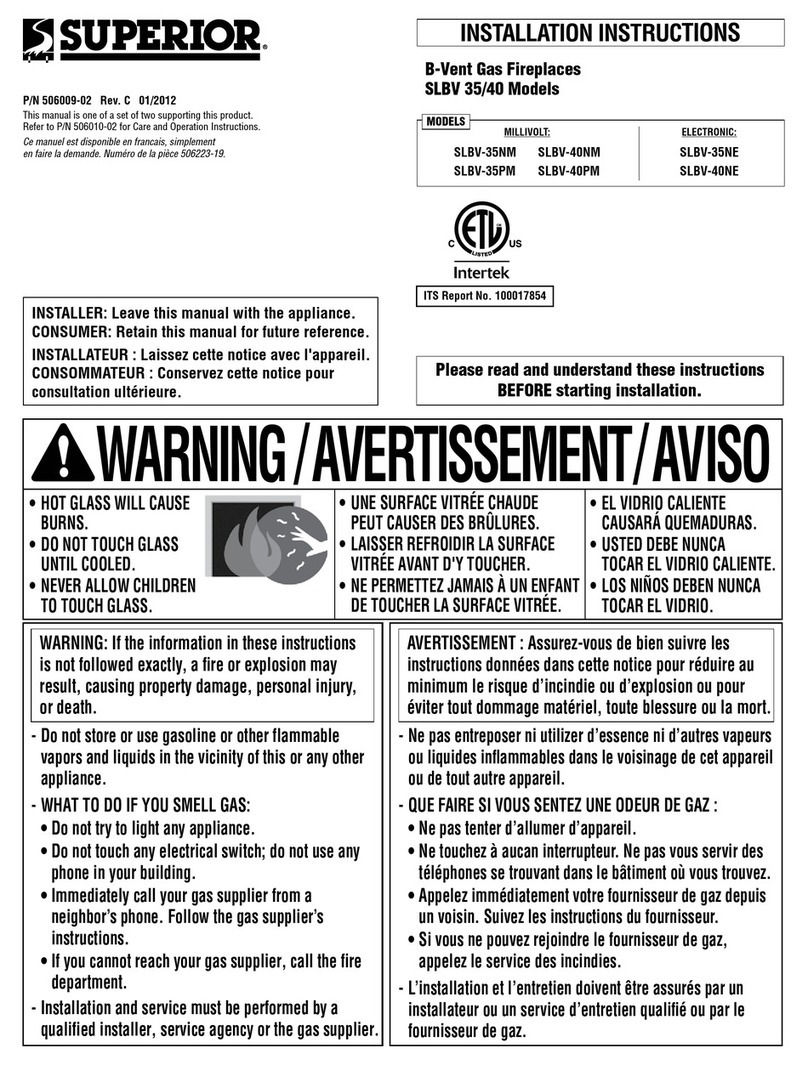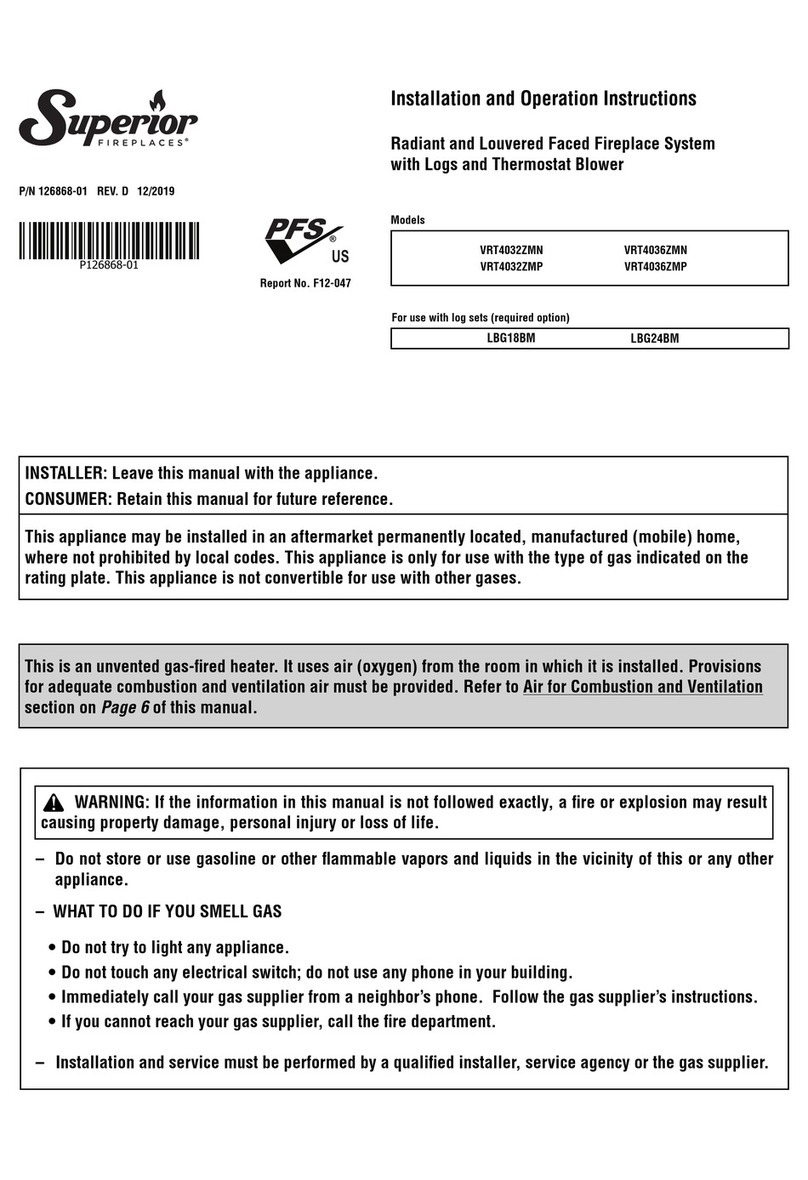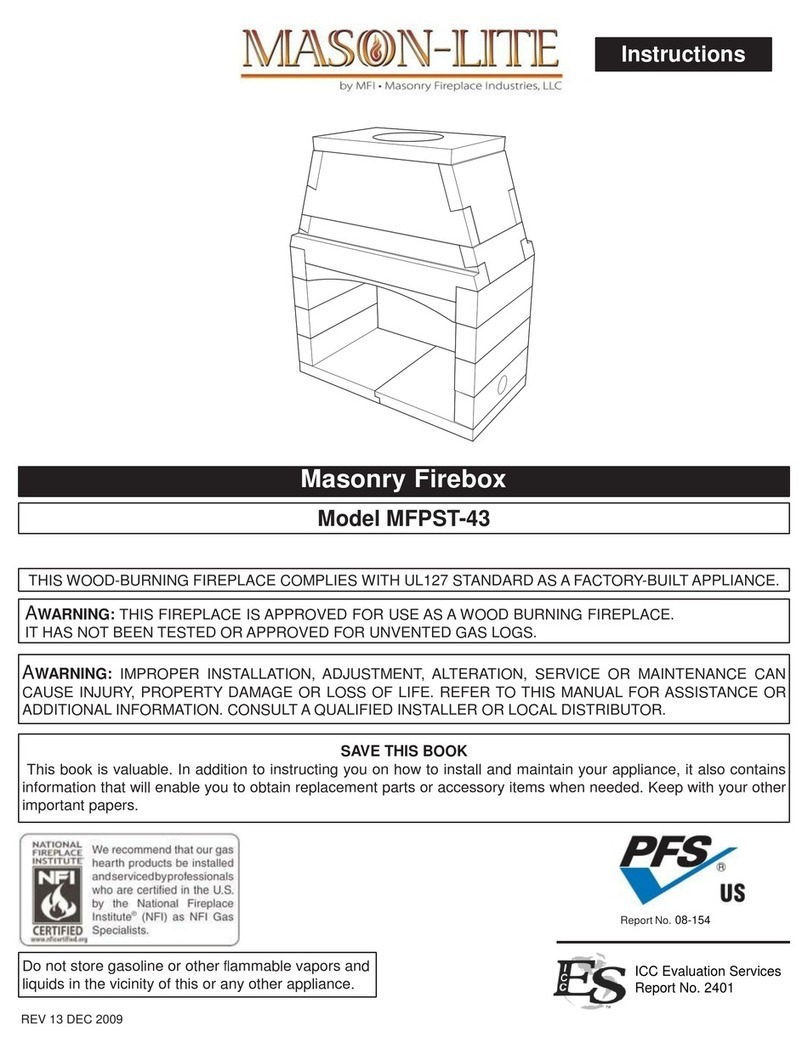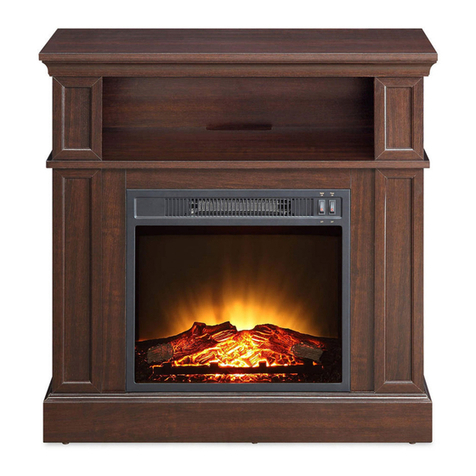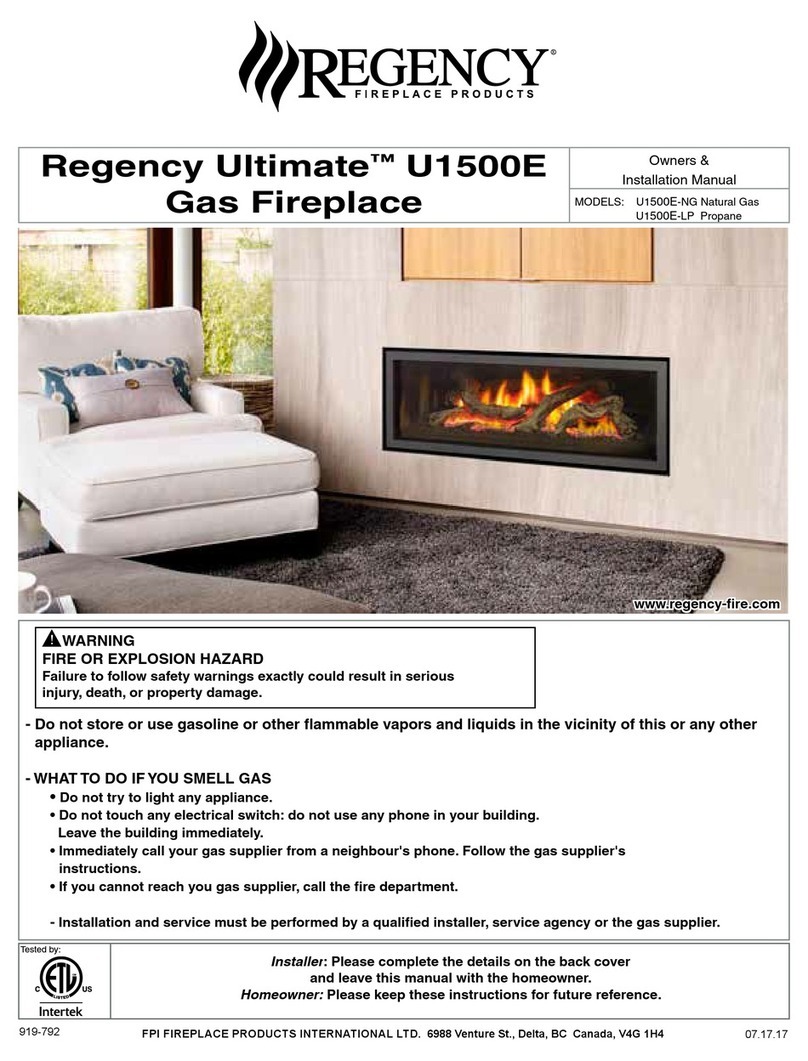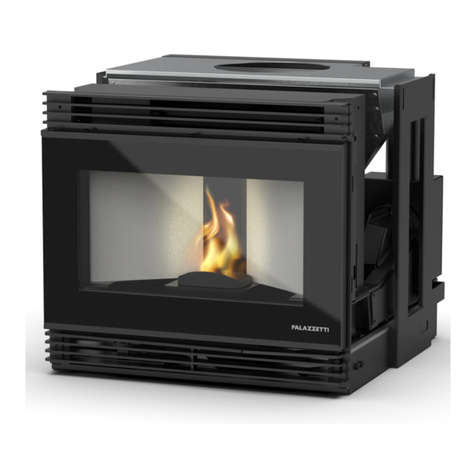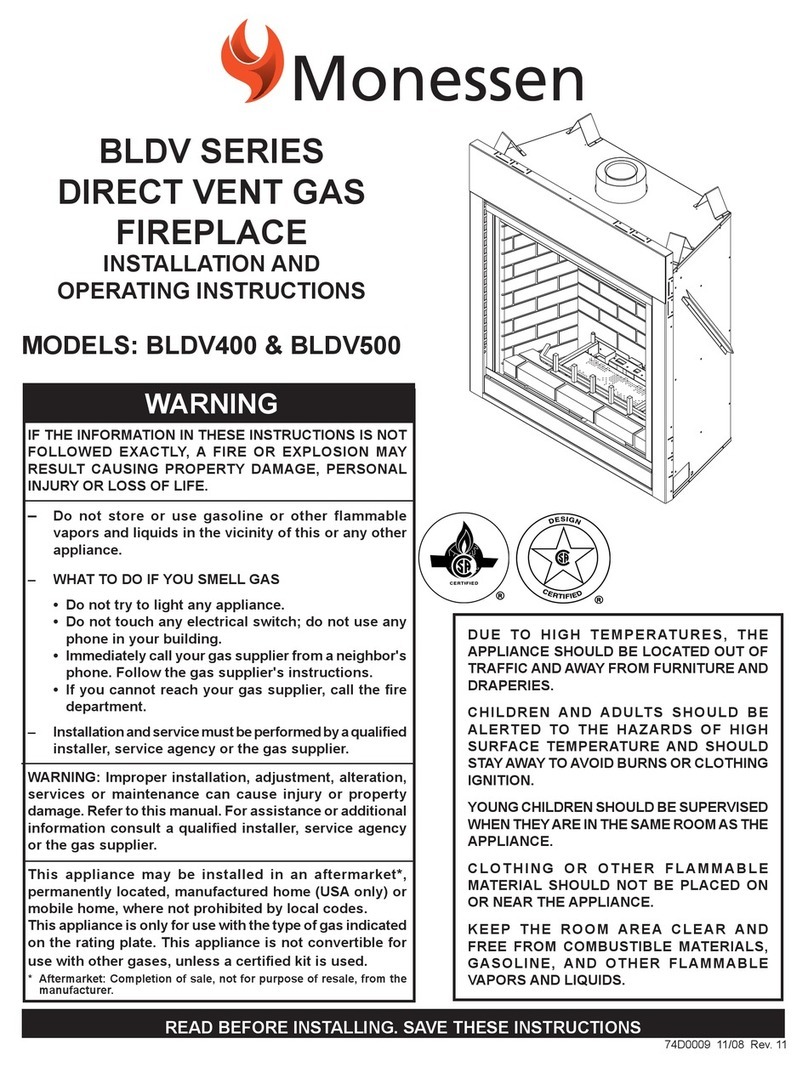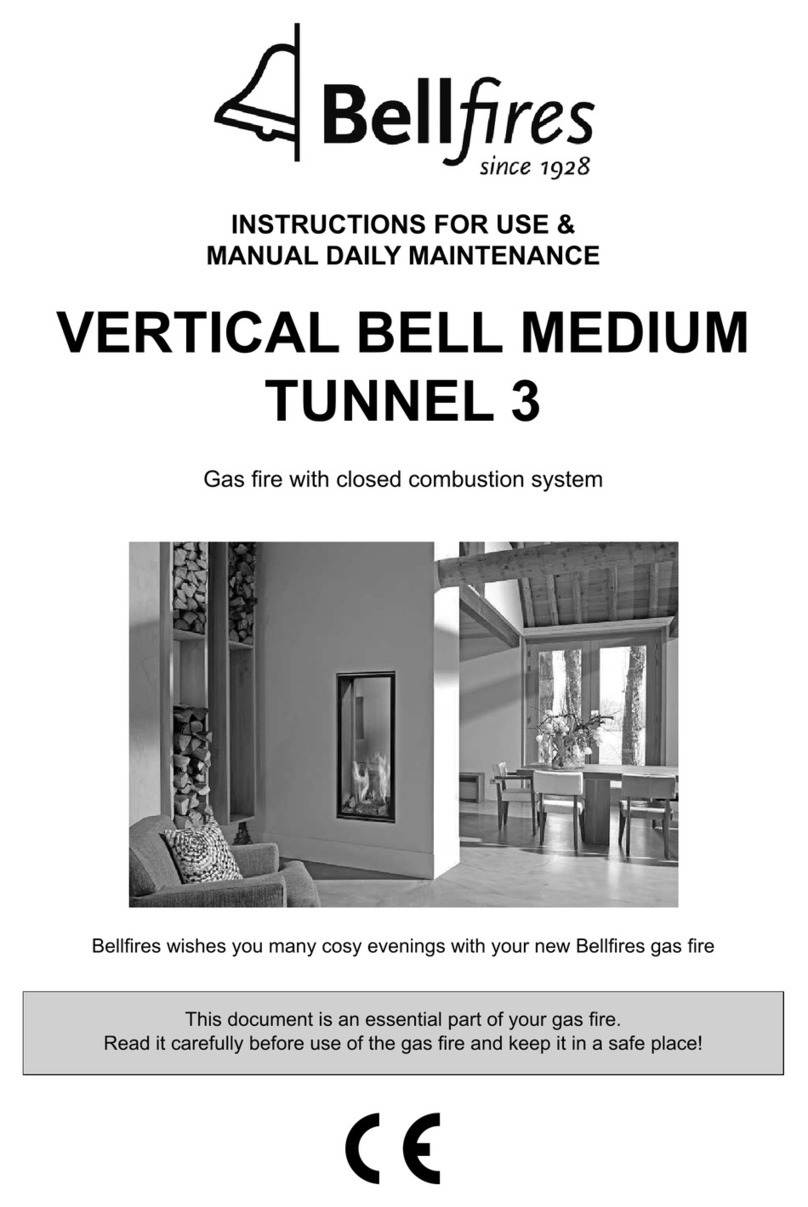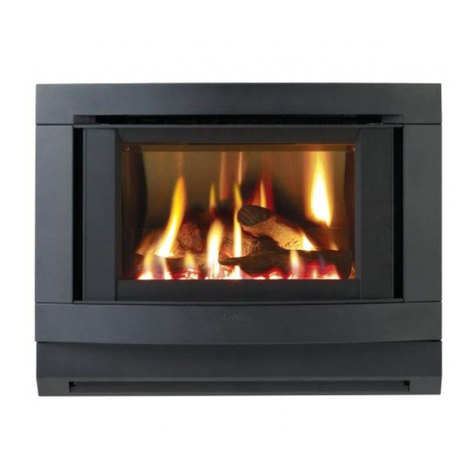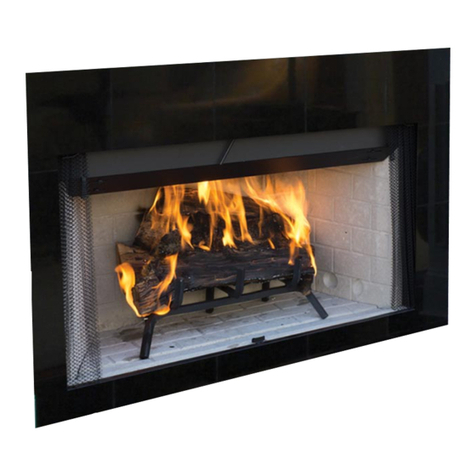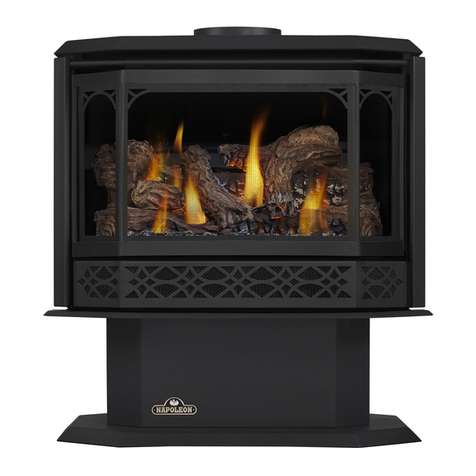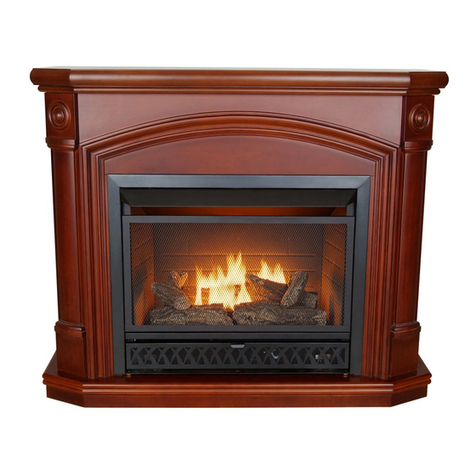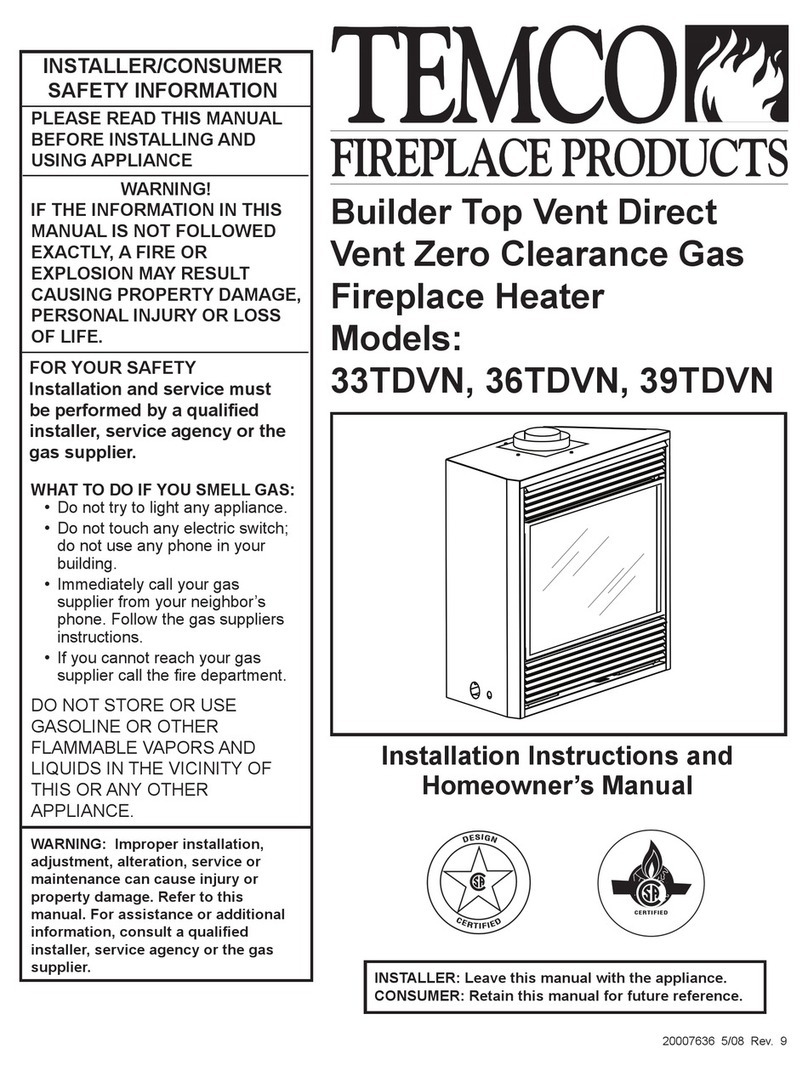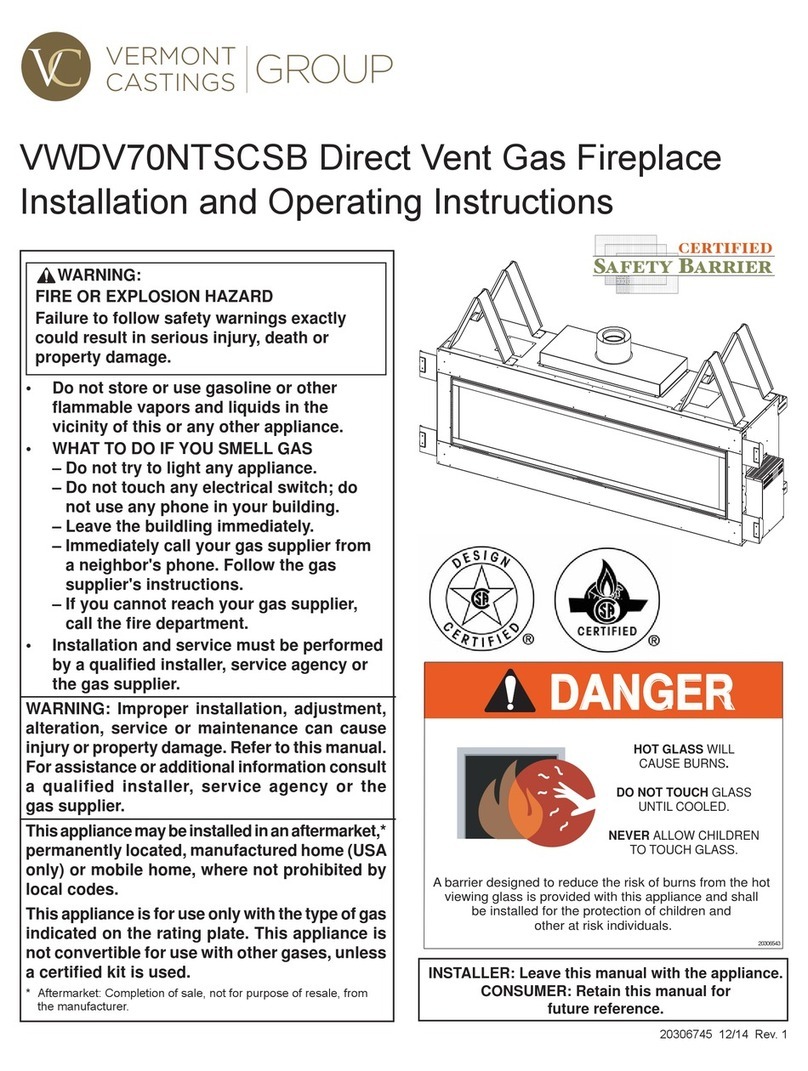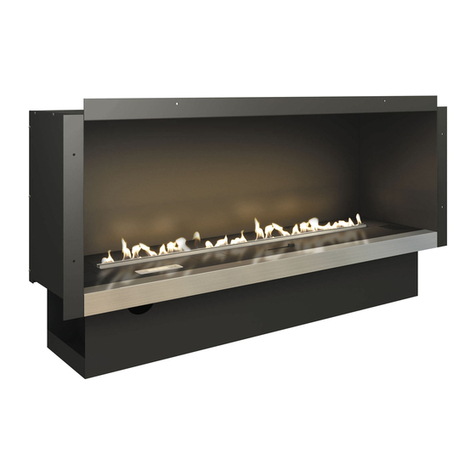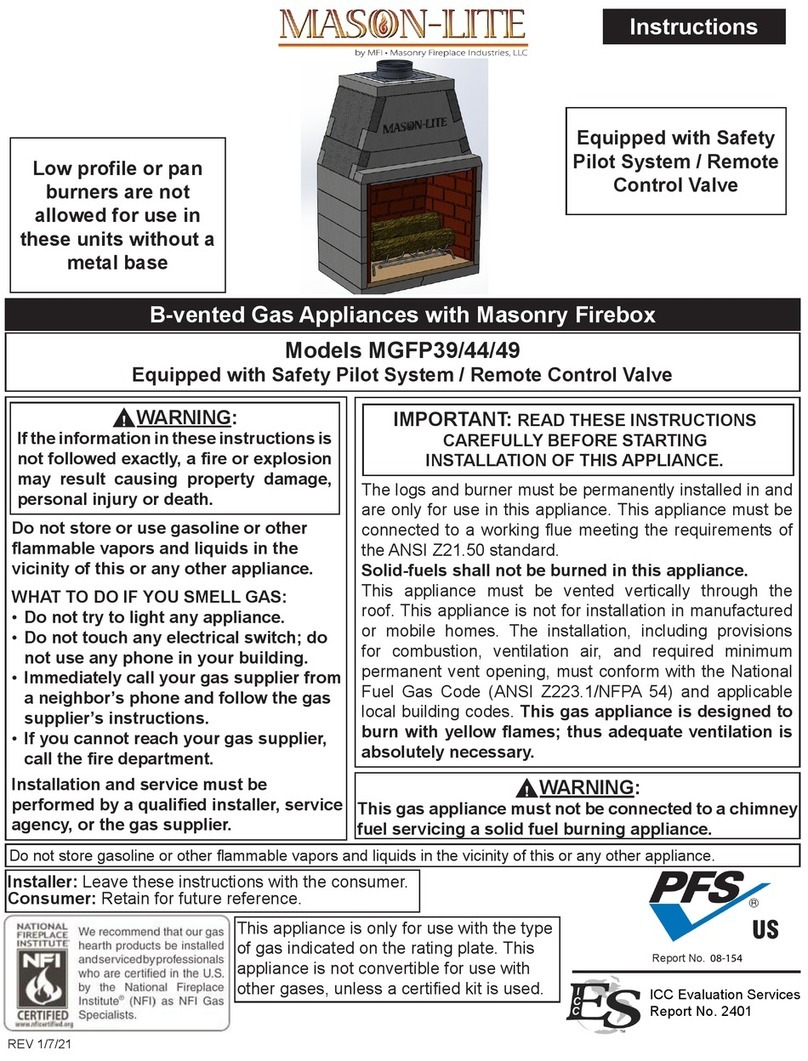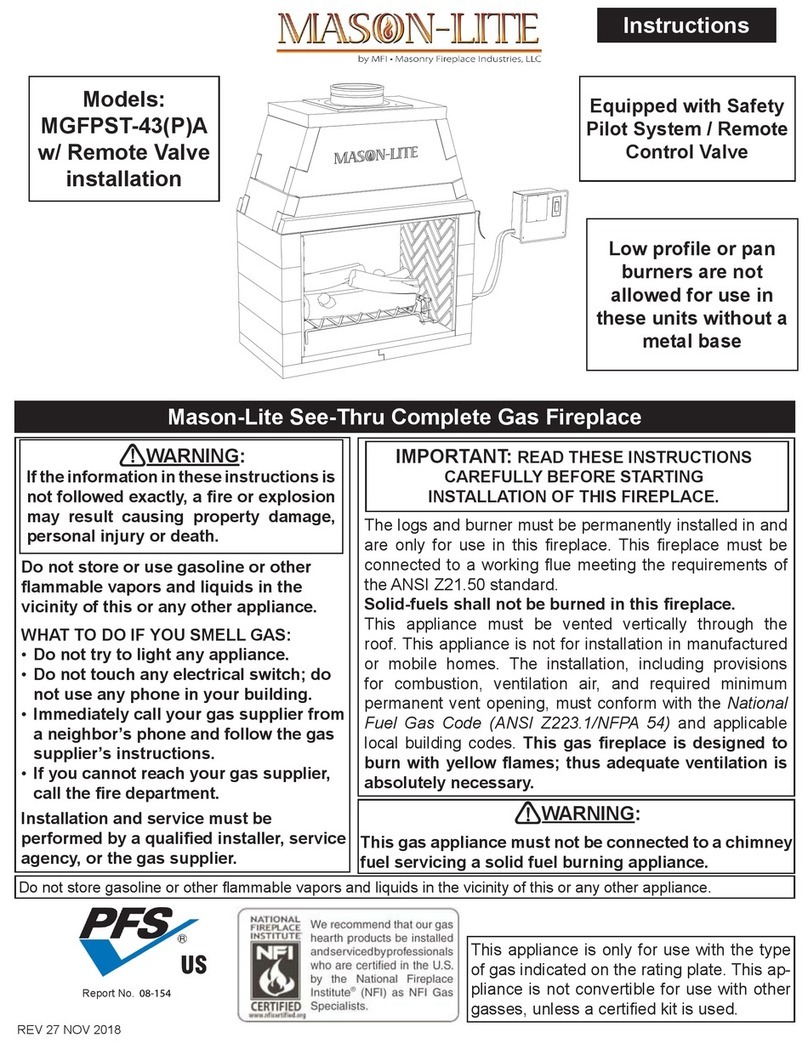
9
Air for Combustion and VentilationAir for Combustion and Ventilation
Energy ecient homes require homes to be airtight but at the
same time provide sucient fresh air to breathe. Fresh air
enters the home through air conditioning duct vents, around
doors and windows but also must provide enough fresh air for
proper combustion on all fuel-burning appliances in the home.
Exhaust fans, replaces, clothes dryers, and fuel-burning
appliances draw air from the house to operate. You must
provide adequate fresh air for these appliances. This will insure
proper venting of vented fuel-burning appliances.
Non-combustible
Flex Hose
Figure 13 Exterior
Providing Adequate Ventilation
In accordance with the National Fuel Gas Code NFPA 54/ANSI
Z223.1, Section 5.3, Air for Combustion and Ventilation, all
spaces in homes fall into one of the three following ventilation
classications:
1. Unusually Tight Construction
2. Unconned Space
3. Conned Space
The following information will help you classify your space and
provide adequate ventilation.
IMPORTANT: Outside Air Kits are not approved for use with
this replace intended for Unvented Gas Logs. Installing an Air
Kit through the side wall of the replace may aect the proper
function of the ODS pilot system.
Unusually Tight Construction
The air that leaks around doors and windows may provide
enough fresh air for combustion and ventilation. However,
in homes of unusually tight construction, you must provide
additional fresh air. Unusually tight construction is dened as
construction where:
a. Walls and ceilings exposed to the outside atmosphere have
a continuous water vapor retarder with a rating of one perm*
or less with openings gasketed or sealed and...
b. Weather stripping has been added on openable windows and
doors and...
c. Caulking or sealants are applied to areas such as joints
around window and door frames, between sole plates and
oors, between wall-ceiling joints, between wall panels, at
penetrations for plumbing, electrical, and gas lines, and
other openings.
* A perm is a unit of permeance or water vapor transmission,
the US perm-inch is dened as the passage of 1 grain of vapor
through 1 square foot of 1 inch thick material in 1 hour under a
pressure dierence of 1 inch of mercury.
If your home meets all the three criteria above, you must provide
additional fresh air.
Unconned Space
An unconned space has a minimum total air volume of
50 cu.ft. (cubic feet) for each 1,000 Btu/Hr input rating of all
appliances in the total space (cu.ft. = length x width x height
of space). Include adjoining rooms only if there are doorless
passageways or ventilation grills between the rooms. If the Btu
per 50 cu.ft. is less than 1,000 Btu/Hr, then fresh air will be
provided by the natural air ow into the house.
Conned Space
A conned space has an air volume of less than 50 cu.ft. for
each 1,000 Btu/Hr input rating of all appliances in the space (cu.
ft. = length x width x height of space). Include adjoining rooms
only if there are door less passageways or ventilation grills
between the rooms.
Determining Total Air Volume
Use this work sheet to determine if you have a conned
or unconned space. The space to be considered includes not
only the room in which you will install the replace but also any
adjoining rooms with ventilation grills between them or door
less passageways.
1. Determine the total volume of your space
L x W x H = _______ cu.ft.
Example: Space size = 20 ft. long x 20 ft. wide x 8 ft. high
(ceiling height) = 3,200 cu.ft.
If adjoining ventilation to adjoining room is supplied with
grills or openings, add the volume of these rooms to the total
volume of the space.
2. Divide the space volume by 50 cu.ft. to determine the
maximum Btu/Hr the space can support.
_______ cu.ft. (volume of space)
50 cu ft. = (Maximum Btu/Hr the space can support)
Example: 3200 cu ft. (Volume of space) / 50 cu. Ft. = 64.0 or
64,000 (maximum Btu/Hr the space can support.)
3. Add the Btu/Hr of all fuel burning appliances in the space.
Vent-free replace _______ Btu/hr
Gas water heater* _______ Btu/hr
Gas furnace _______ Btu/hr
Vented gas heater _______ Btu/hr
Gas replace logs _______ Btu/hr
Other gas appliances* _______ Btu/hr
Total = _______ Btu/hr
Example: Gas water heater 40,000 Btu/hr
Vent-free replace +36,000 Btu/hr
Total = 76,000 Btu/hr
* Do not include direct-vented gas appliances. Direct vent draws
combustion air from the outdoors and vents to the outdoors.


















